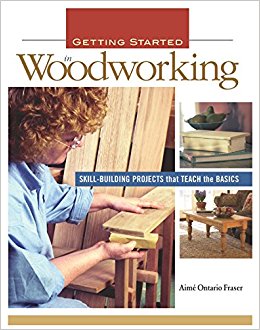
The first woman I was ever aware of in the realm of woodworking publications is Aimé Ontario Fraser. It was the early 1990s when I began to notice her name, and occasionally her picture, in the pages of Fine Woodworking. By then, I had spent a decade in custom furniture and cabinet shops in England and the States. One of the shops where I’d worked had three women, along with about ten men. But in the pages of the woodworking magazines I read, women rarely made an appearance.
The last article I remember seeing with Fraser’s byline was in 2005. After that, she slipped from my notice. Every so often I wondered what had become of this woman who was among the first to normalize images of women in woodworking – to get our eyeballs so used to seeing women (of all ages, sizes, etc., just as we do with men) fitting butt hinges, planing boards, ripping panels on table saws, carving mantels, and so on, that we may someday no longer say “wow, a woman woodworker” and simply see someone building a cabinet or applying her skill in the furnishing of an interior. So I contacted Fine Woodworking’s unfailingly helpful Betsy Engel, who forwarded my inquiry to Fraser. To my delight, she agreed to speak with me.
***

Fraser got her start in woodworking as a high school exchange student in New Zealand. It was 1976 and New Zealand was the center of modern wood composite boatbuilding technology – we’re talking 1/8” or thinner layers of wood laminated with epoxy and fiberglass cloth to produce hulls that are very light and strong. Even though she hadn’t been allowed to take woodworking classes in high school back home (she had to take home economics instead), she got a job working for a boat builder. She loved the work.
Back in the States, she wanted to keep building. She became romantically involved with a sailing buddy in Connecticut whom she would later marry. “He built stuff, so we started doing boat stuff,” she says. Building boats and finishing hulls became her work for the next decade-plus. This is how she learned woodworking.

Fifteen years later, she worked her way into running the boat shop at The Maritime Center (now the Maritime Aquarium), where she focused on traditional local boats and boatbuilding techniques. She led a group of serious volunteer builders, and the job also allowed her to work with schoolchildren; at one point she and a group of seventh graders built four boats in two weeks and then raced them on the river behind the Center.
On the Topic of Gender
At this point it’s worth noting that the trajectory of Fraser’s woodworking career has had a lot to do with being a woman in a field long dominated by men. “I’m pretty skilled as a woodworker,” she says. “I know how to make odd shapes and how to fit things together so well that the water doesn’t come in.” If you know anything about boatbuilding, you’ll appreciate she’s being modest. Such meticulous work is no mean feat. “But I never worked in a boatyard or on a building site. I honestly didn’t want to put up with that s**t.”
Take mansplaining, for instance. (Please, do take it, and never bring it back.) “I remember when I was in charge of the boat shop at the Maritime Center,” Fraser recounts, “and one of my jobs was to build boats so that people could watch me. I was a display! I had a team of volunteers including a V.P. from GE, a retired general, some heavy-duty people I had to manage. They would come into the shop and work, and we worked together to build boats in a traditional manner. But then men would wander by to watch the display. Some high level work was going on, and random men would tell me I was doing it wrong and start lecturing me on how to use a chisel or plane. Anyone who knew anything about building could see what I was really doing, yet so many clueless men felt compelled to tell me I was wrong. This phenomenon has always been hard for me to fathom.”
It’s fair to say that neither Fraser nor I would claim that such advice is only given to women. What’s irksome – well, aside from the “correction” being based on a widely held belief that fails to take all relevant factors into account – is the experience of people assuming you know less than you do because you’re a woman. Which is pretty ironic in Fraser’s case, considering she’s something of an expert on this subject. In 2002 she wrote an article on sharpening handplanes for Fine Woodworking (#157, July/August 2002) that involved electron micrographing plane irons and sharpening stones.
Shortly after, she put together a team for the New England Handplaning Contest (organized by The Woodworkers Store in Norwalk Connecticut); her team included the then-president of DMT, students, and friends, and relied heavily on Harrelson Stanley of HMS Enterprises, importer of Japanese tools and sharpening equipment. They trained by sharpening planes every day for weeks prior and discussed technique. The president of DMT made them a diamond flattening device so they could flatten the soles of their planes. Fraser was named the New England Handplane Champion for producing a 9-foot long lace-thin shaving of Alaskan cedar. “After I won it, I had to go to the grocery store on my way home. I remember walking down the frozen food aisle and thinking, ‘I’m the New England Hand Plane Champion!’” she recalls, chuckling at the geekiness of it all.
Nevertheless, corrections from men on the proper way to put down a plane continued to dog her. She did a TV commercial for Woodcraft in which she was planing a wide panel while talking about the company’s products. She put the plane down upright on the bench. Alarm bells went off around the country. “People throughout my career who were not professional woodworkers, people who did not win the New England Handplane Championship, would tell me I was doing it wrong!” she laughs. “I would have to say, ‘no if you put it on its side you risk nicking the blade [or] cutting yourself. Put it down gently, but not on its side, [or] somebody’s gonna get hurt.”
And then there’s just plain old-fashioned sexism. “I always faced a lot of crap for being a woman,” she continues. “‘Oh, you do that and you’re a woman?!’ I didn’t let it bother me. Writing helped a lot because it gave me many more opportunities than if I’d been a tradesperson alone. But I always felt, ‘This is what I am, this is what I do.’ I think like a woodworker. I never wanted to get too bothered about gender, though it’s always been there. At this one boatyard, one guy called me the Varnish Muffin. I said, ‘Look, I’m a professional; I have a staff of four and thousands of dollars’ worth of equipment. If you want me to come and varnish your boats, I will, but I am not a ‘Varnish Muffin.’ I don’t varnish just because I’m the captain’s girlfriend and girls varnish. I varnish because it’s my part of my profession.”
The Taunton Connection
Throughout the early years of her career she wrote for WoodenBoat and other boat-related magazines, in addition to running her own business on the side. One winter’s day, as she headed out to work on a 60-foot yacht in the water, she realized, “if I fall off this dock I will die, and no one will know, because I’m the only one out here and it’s too cold, and the current is too swift [to survive].” She started looking for another way to stay in woodworking and was hired by the Taunton Press.
After leaving Taunton around 1998, she had a job as the director of education, planning classes and teaching at The Woodworkers Store in Norwalk, CT that had a woodworkers’ club. People paid for shop time by the hour and there was someone on hand to help with projects. “I tended not to do ‘woodworking for women’ because I felt that was talking down to people,” she says. “I recognize that women at that time needed extra encouragement. But I didn’t like the idea of putting the women off in another room. I [did teach] boatbuilding classes. It was Taunton’s 25th anniversary; the owner of the franchise teamed up with Taunton and we had a bunch of authors come in and demonstrate while working.”
After that, she was the Principle Instructor at the Wooden Boat Workshop, also in Norwalk. It operated on a similar concept, focused on building small boats.
Fraser has written two books: Getting Started in Woodworking and Your First Workshop. She did technical editing for Taunton Books, working on the Mark Duginske’s Band Saw Handbook and the second edition of Bruce Hoadley’s classic, Understanding Wood. After that, she hooked up with John Kelsey and Ian Kirby; together they had a small company called Cambium Press, which published Kirby’s books on sharpening and dovetails, along with other books. She also ghost-wrote James Krenov’s book With Wakened Hands. “I was given a box of photographs and several hours of recordings, and we made that book.” She spent a week with Krenov to finish it up – a special experience, given that he was one of her heroes from the 1970s. “I had the good fortune to hang out with people who were my heroes,” she reflects. “Krenov, Mark Duginske, Ian Kirby, and others. We became good friends and had a lot of fun together.”
By 2008 Fraser had gone out on her own, with a 1500-square-foot woodworking shop in an old warehouse in Connecticut. Along with other types of cabinets, she did specialized work for equestrians, designing and building travel cases for all manner of dressage equipment.
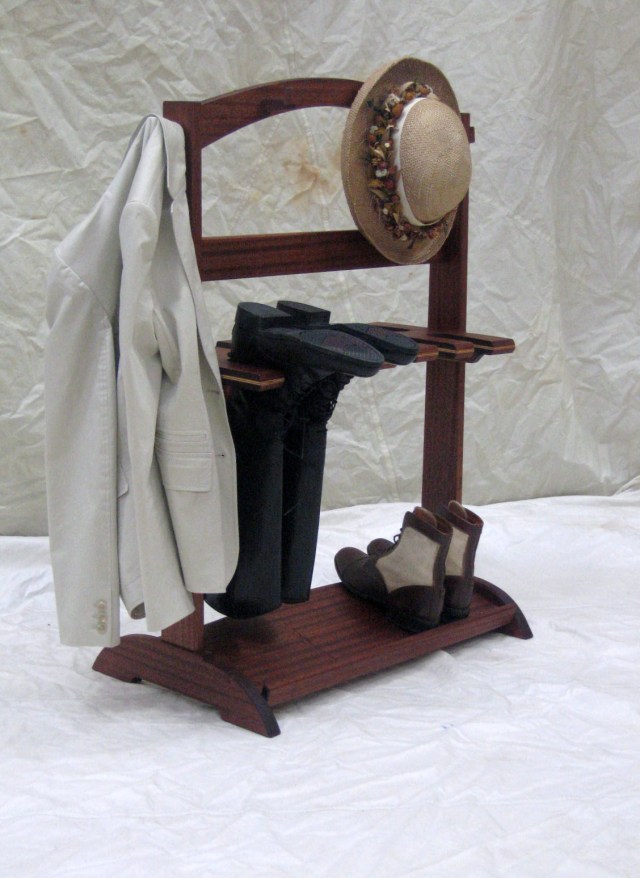

Then the economy shifted, culminating in the housing crisis and the Great Recession. As a one-person business without the capitalization necessary to survive the drying up of high-end spending, she was devastated. She worked all day in her shop, then went to an evening job at a grocery store in an effort to keep the bills paid. “When they taught me how to run the fryer, I cried just a little,” she says. Eventually she realized she could not keep her business going. She sold all of her machinery, though she kept the hand tools and clamps.

Just last year, Fraser was hired as New England Training Coordinator for Mueller Reports, a company that specializes in insurance inspections for homeowners and small business. She trains people to inspect buildings. Not surprisingly, her knowledge of building and woodworking is invaluable. “It’s a wonderful challenge, and the steadiest paycheck I’ve had in my life,” aside from when she was at Taunton Press.
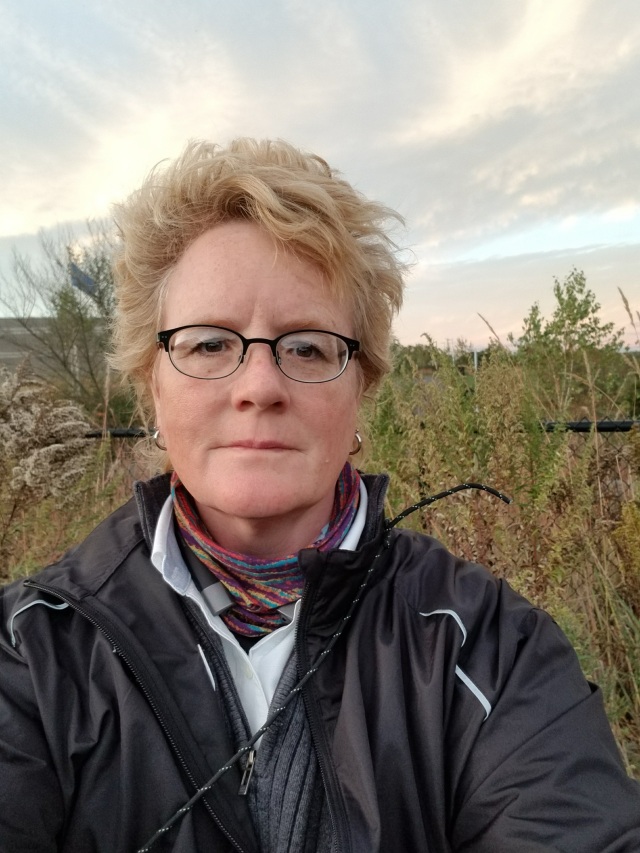
For the present, Fraser thinks of woodworking as a fallow field she’s letting rest. She lives in a community that regulates how she uses her garage. “But I do have a basement and tons of clamps and tons of tools,” she adds, thinking about how she’ll get back into it.
Finally, what about the name Ontario? I’ve always been curious, so I asked. Fraser’s family is from Upstate New York near the Canadian border. Her grandmother was from Ontario, and her parents had a summer cottage on Lake Ontario, so that became her middle name.
Thank you, Aimé, for allowing me to interview you, for digging up all these old photographs, and for being one of the early public faces of women in our field.
— Nancy Hiller, author of “Making Things Work“
A few images of Fraser’s work

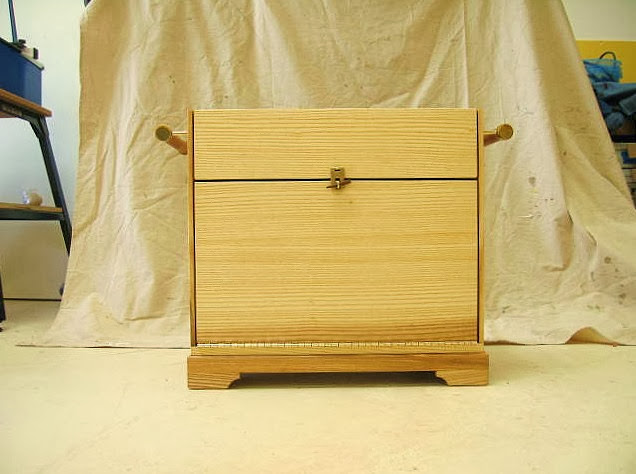

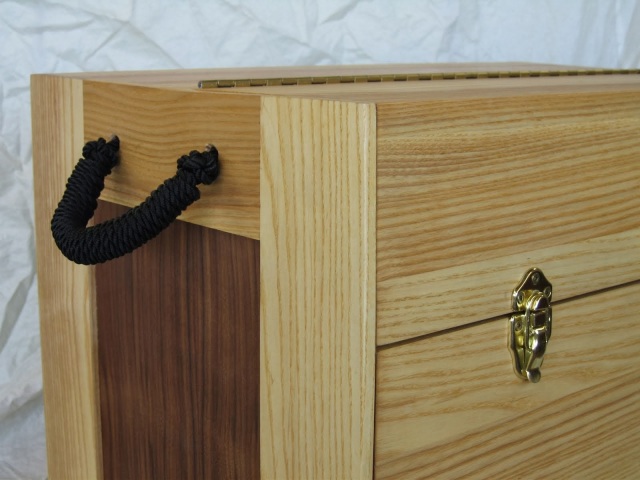

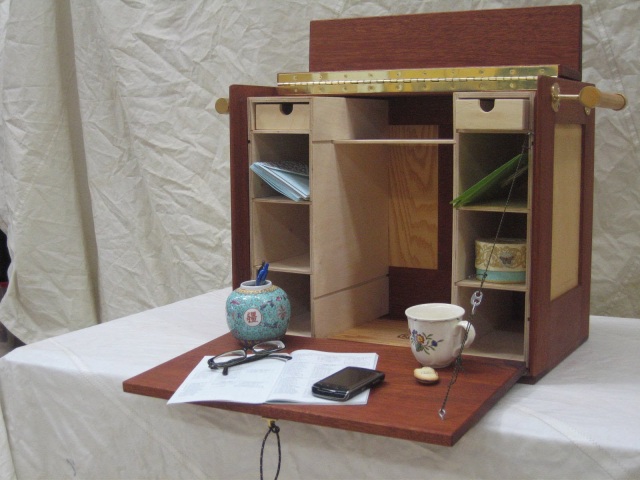

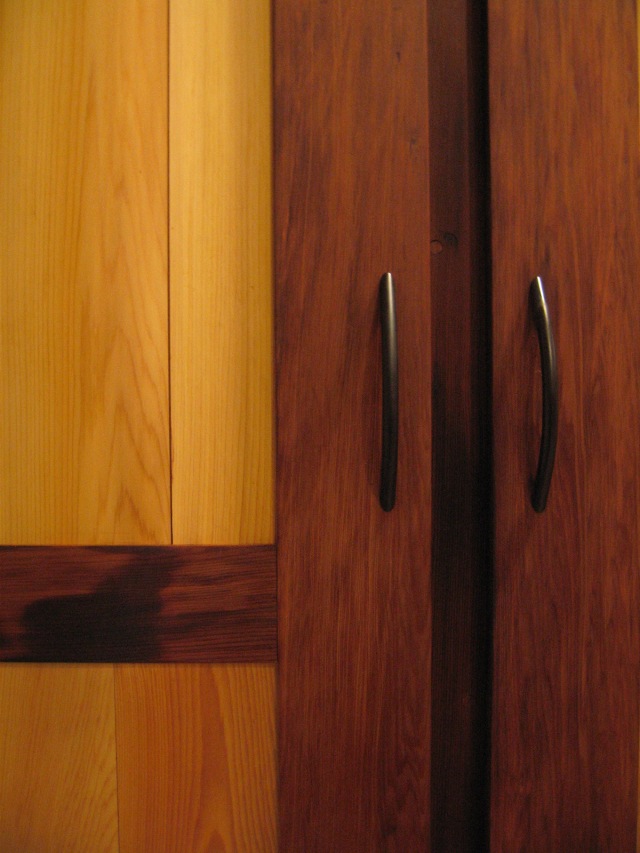


Of coarse, this story strikes many chords for me and I am sure for many others. I immediately forwarded this to Ann, former biz partner and awesome boat builder and captain, who will relish in your “telling it like it is” and also from a boatbuilders/cabinetmakers perspective. Amie”s sharing of her experiences along with your wonderful delivery of words brings so much affirmation to what was (and can still remain) just the way it was. Ann and I often say we want to write a comedy vignette of all the comments and situations that we had to deal with in the 80’s and 90’s when Breton Flannery Woodworks existed. Those “Varnish Muffin” moments.
Thanks Amie and Nancy for bringing this story forward and also for getting a chance to see her beautiful work. I so enjoy being introduced to her at this time. And, as always, many, many thanks to you, Nancy. Your stories can be such a soothing balm to these places of the past. A new place to lean into.
Thanks Nancy, I always enjoyed Aime’s contributions in FWW & WB. She was active on the WB forum for a while as well, but I seem to remember some pretty sexist comments on that platform. I hope she is able to get back into woodworking, especially boats!
That’s one of the best stories I’ve ever read here at the LAP blog. Interesting life and career.
Thank you for the update on Aime, I always enjoyed her articles and it makes me wonder why Taunton doesn’t continue to feature her work.
I’ve read thousands of articles over the years for technical how to but I find that I most enjoy learning about the people who wrote the articles. I appreciate your “Little Acorns”. We all know what little acorns produce.
Thank you very much for this write up. Always heartening to see stories of “chicks” who work wood. There are plenty of us, all enduring the same ridiculous comments and all constantly figuring out how to do what we love without becoming overly hardened due to the atmosphere that we generally have to work in.
Placing a plane face down was something my grandfather taught me over 50 years ago and for the very same reasons , as grandpa always said take care of your tool and they will work a lifetime and beyond
A very interesting article on Fraser.
One of your best interviews yet, Nancy. Bravo!
Sole down for the win. Thanks Nancy. I went back through my FWW magazines and found Frasers articles.
Thanks Nancy and Aime for this update! Sounds like Aime has a lot she could teach (boatbuilding, introducing kids to craft, running a woodworking business, going your own way in sometimes dopey world). Hope we get more chances to hear from her!
In the 80’s I was an appliance tech. At one point my boss hired a woman tech. She could braze a refrigeration line as thou a machine did it. For the uninitiated brazing takes a steady hand and eye and experience. For all that we had housewives call up and request male tech’s. To me she was better than all of us.
Beautiful work. Thanks for the essay.
Wonderful story, wonderful subject. Thank you so much for this unapologetic followup of Aime. I kept thinking when reading this that five years ago, maybe even two, it would not have been so well received.
As always your profiles are engaging and a fun read, Nancy. Ms. Fraser makes boats! Damn! Boats have curves. Curves are hard! Any woodworker that lives in and designs and builds in that realm is a total badass! Respect!
This is gonna get some of y’all chuffed, but the little sailboat says a great deal about ‘why’. It’s gaff rigged, and somewhat uncommon. Harder and more expensive to build and maintain, and the performance is no better that the common Bermuda rigged boat, of which there are millions.
It’s an interesting boat, gaffs are fun to look at, lots of subtle details, and I would love to do a hard (non gender oriented) cross examination as to why this and not that. But I’ll be on the water this week, as I am most weeks in the summer, and it’ll be on a Bermuda sloop.
I think the phrase “designed for teaching” explains it adequately.
Beautiful work. There is a great deal of elegance there, understated but timeless.
Thanks, Nancy.. this made me smile.
Back in the early 2000s I spent a lot of time at the Woodworker’s Club in Norwalk, CT. Aime was there often and taught classes in their shop. She had a big influence on me as I learned the basics of hand tool woodworking. I saw her in FWW for a while afterwards before she dropped off the radar. I’ve wondered what happened to her.
My one small claim to fame in my woodworking career is my wife Sarah and I taking second place to Aime in the New England Handplaning Contest she mentioned. I still have the certificate around here somewhere. I think Aime took home a Lie-Nielsen plane for first place. Good times.. I’m happy to hear she is well.
-Josh